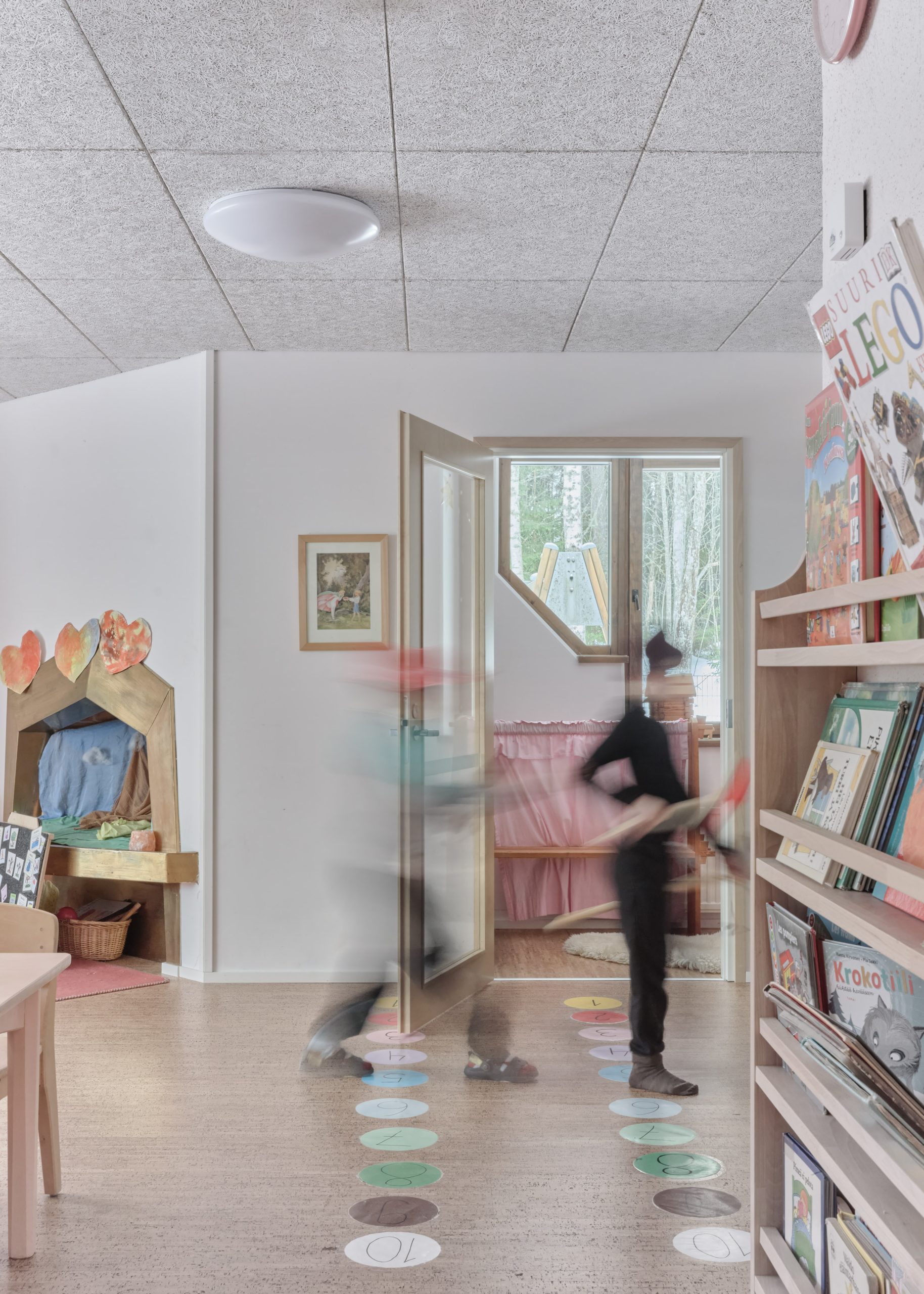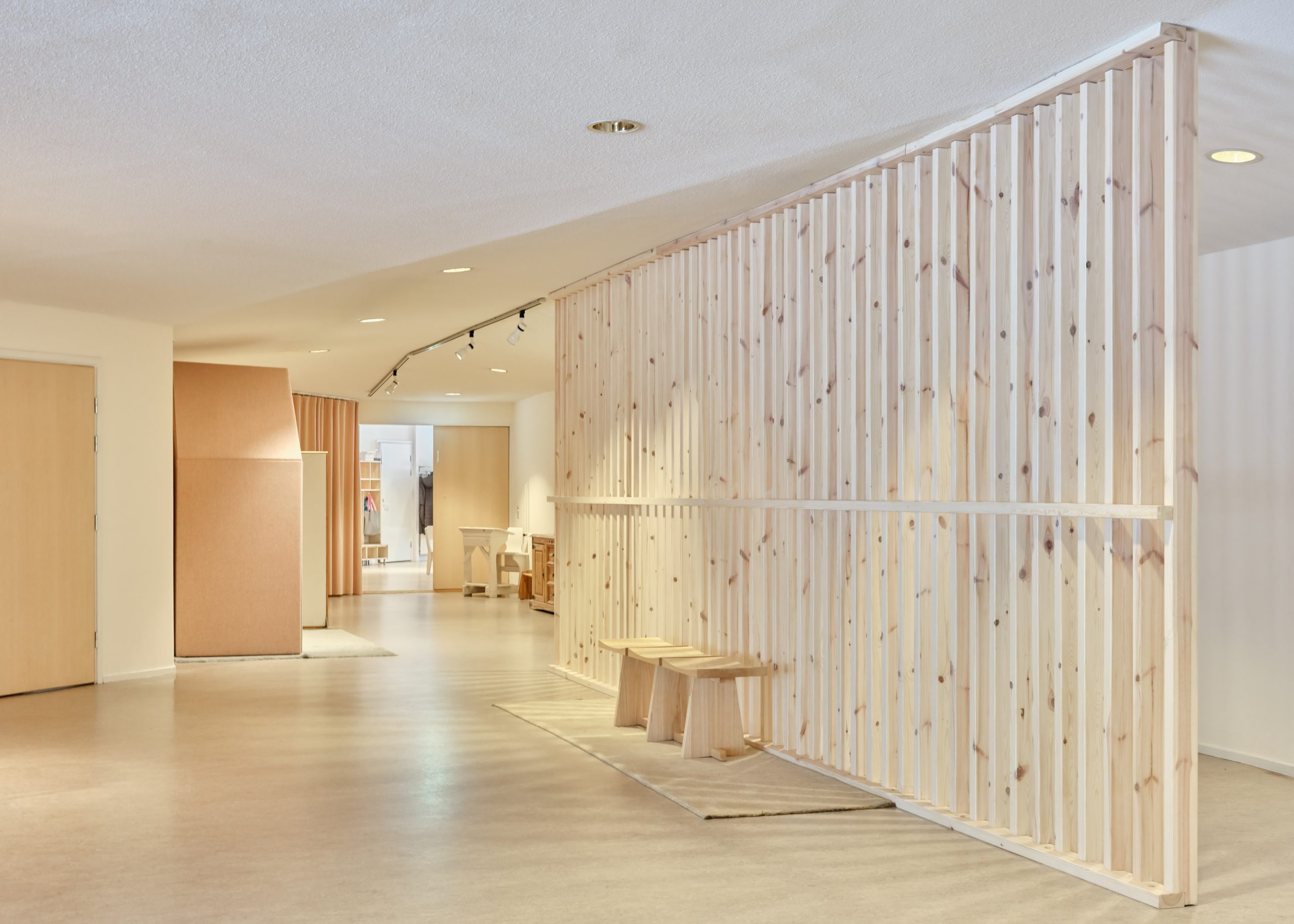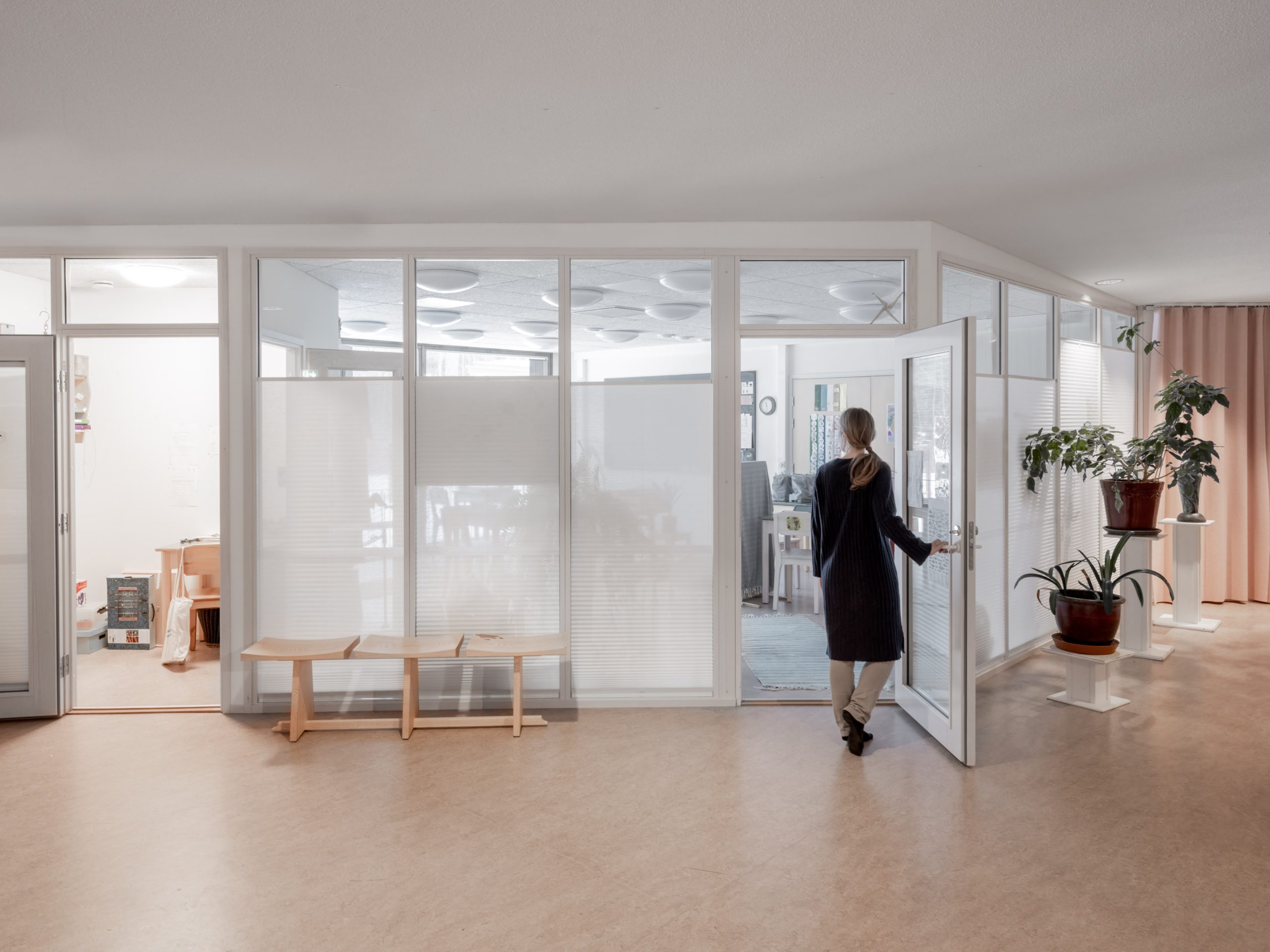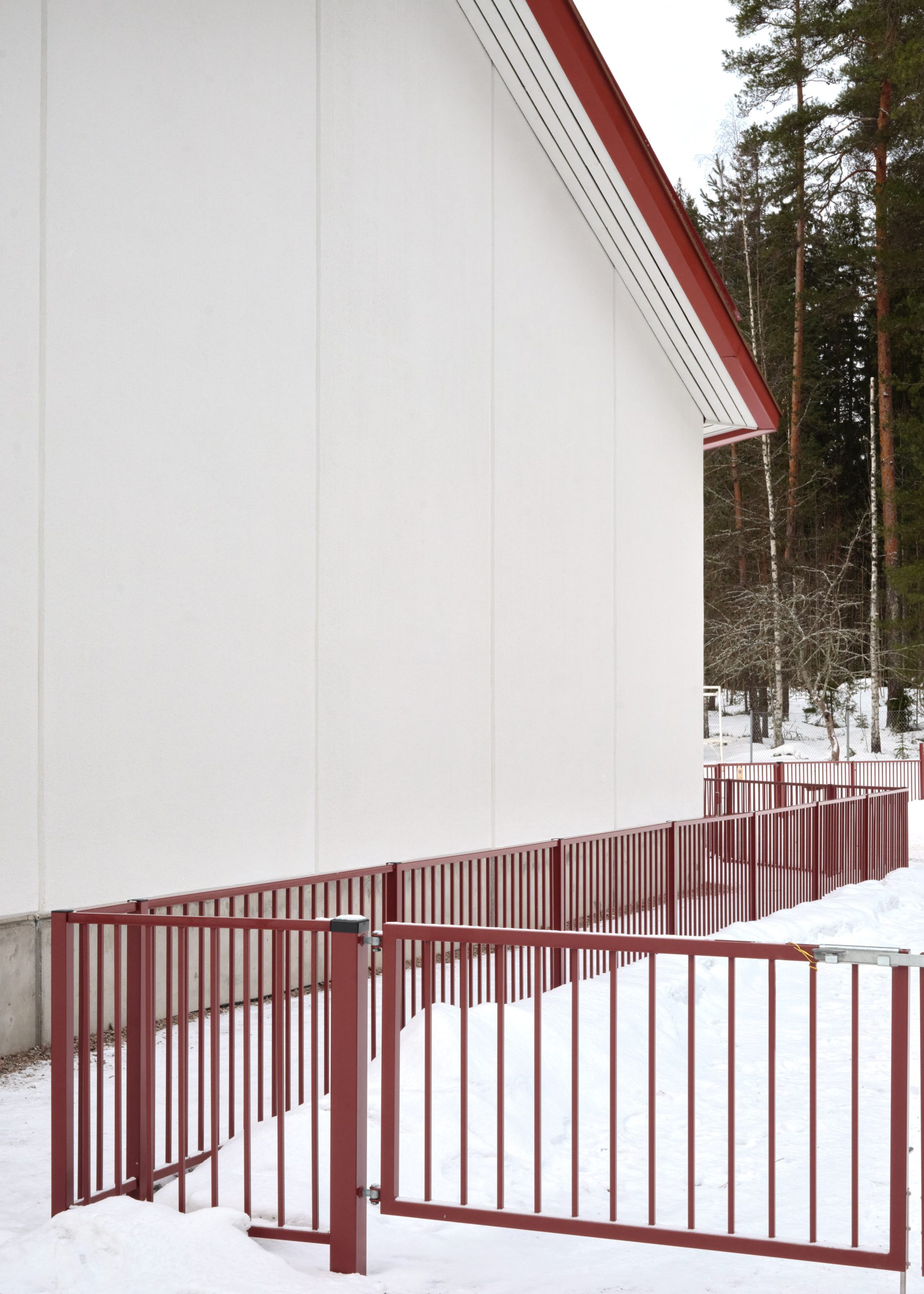The renovation and conversion of a distinctive 1980s community building into a special education school was guided by the wishes of students and staff. Comfort, safety, functionality, accessibility, and acoustics were all improved within the framework of the existing structure.
The design approach focused on adapting the existing spaces for school and after-school use with minimal alterations and within a limited budget. The site layout was improved by dividing the yard into two play areas, adding playground equipment, and reorganizing the drop-off traffic. A former residential unit within the building was converted into accessible classrooms.
With relatively small changes and thoughtful improvements, the existing spaces were transformed into gentle, inviting, and functional environments for learning. Some internal wall and floor modifications were made, along with the addition of accessible restrooms and routes. Lighting, ventilation, and cleaning facilities were upgraded. Fixed furniture and textiles were designed as integral parts of the learning environment. The acoustics of the spaces were enhanced with acoustic panels and long wool fabric curtains.
The materials used are non-toxic and healthy, including wood, cork, peat panels, clay plaster, and linseed oil paints.






